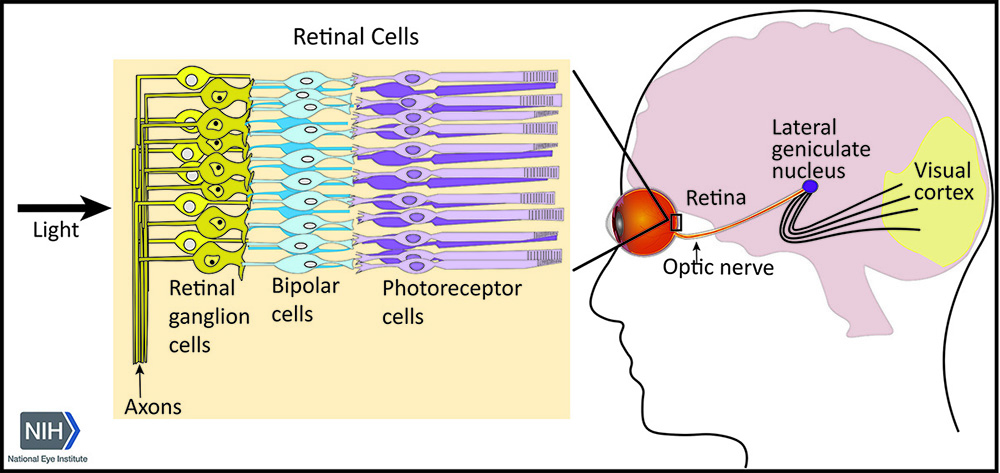IRP researchers identify brain circuits responsible for visual acuity
Studies demonstrate the effect of retinal injury on visual processing pathways, providing insights for the development of vision restoration therapies
Researchers at the National Institutes of Health (NIH) have identified which brain circuits are vital for visual acuity and how they are affected by damaged retinal cells. While vision restoration therapies, such as stem-cell and gene therapies, aim to replace or repair damaged cells in the eye, it is critical to understand how brain circuits involved in vision are affected by retinal cell loss. Study results suggest that targeting these circuits may be necessary to achieve optimal recovery of visual function, and have significant implications for the development of future vision restoration therapies that address visual pathways beyond the retina. The study published today in The Journal of Neuroscience.
“A huge amount of progress has been made in repairing the eye, however little attention has been paid to the functional consequences beyond the eye,” said the study’s lead investigator, Farran Briggs, Ph.D., senior investigator at NIH’s National Eye Institute (NEI). “Brain circuits downstream of damaged or dying retinal cells in the eye may also undergo some loss of function following changes to their retinal inputs.”
Visual processing involves interactions between neurons in the eye and brain allowing us to see the world around us. These pathways originate in photoreceptor cells in the retina that convert light energy into electrical signals, which are then transmitted to the brain's visual processing centers. When retinal cells become damaged due to injury or disease, vision is often impaired. In a process known as neuroplasticity, the brain undergoes functional changes to adapt to a retinal injury or disease/degeneration. A person who experiences vision loss, for example, may have a resulting “blind spot” in a portion of their field of view.

Visual processing involves interactions between neurons in the eye and brain, allowing us to see the world around us.
This page was last updated on Thursday, June 5, 2025